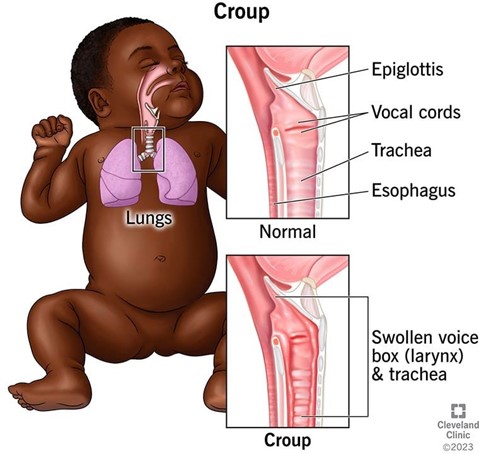The practical nurse (PN) is caring for a client who has a prescription for loratadine by mouth daily as needed. Which sign indicates to the PN that there is a need to administer the medication?
Ulceration on the corner of the upper lip.
Ecchymosis and petechiae on the legs
Red welts widespread over the chest.
Red papules and pustules on the face.
The Correct Answer is C
The correct answer is choice C. Red welts widespread over the chest.
Choice A rationale:
Ulceration on the corner of the upper lip does not indicate a need for loratadine administration. Loratadine is an antihistamine commonly used to relieve symptoms of allergies such as sneezing, runny nose, and itchy or watery eyes. Ulceration on the lip is not associated with an allergic reaction.
Choice B rationale:
Ecchymosis and petechiae on the legs are not related to the need for loratadine. These findings suggest potential bleeding or clotting disorders, and loratadine does not address such issues.
Choice C rationale:
Red welts widespread over the chest are indicative of hives (urticaria), which are often caused by allergic reactions. Loratadine can help alleviate the symptoms of hives by blocking histamine release, making it an appropriate choice for this condition.
Choice D rationale:
Red papules and pustules on the face are unlikely to be treated with loratadine. These skin manifestations may be related to various dermatological conditions, but not necessarily allergic reactions that loratadine is primarily used to manage.
Nursing Test Bank
Naxlex Comprehensive Predictor Exams
Related Questions
Correct Answer is C
Explanation
Croup is a respiratory infection that causes inflammation and narrowing of the airway, resulting in a barking cough, hoarseness, and stridor. The PN should monitor the child's oxygen saturation level via pulse oximetry, as it can indicate the severity of the airway obstruction and the need for supplemental oxygen or other interventions.

The other options are not correct because:
A. Instructing the mother to play with the child for stimulation and distraction may worsen the child's condition, as it can increase his respiratory demand and anxiety.
B. Administering a dose of acetaminophen as needed may help reduce fever or pain, but it does not address the underlying cause of croup or improve airway patency.
D. Encouraging the child to drink adequate amounts of fluids may help prevent dehydration and thin the secretions, but it does not relieve the inflammation or narrowing of the airway.
Correct Answer is B
Explanation
The infant has hypoglycemia, which is a low blood glucose level that can cause jitteriness, lethargy, seizures, or coma. Hypoglycemia is common in infants of mothers with gestational diabetes, as they produce excess insulin in response to high maternal glucose levels. The PN should begin frequent feedings of breast milk or formula, as this can provide a source of glucose and stimulate the infant's own glucose production.
The other options are not correct because:
A. Offering nipple feedings of 10% dextrose may be indicated in some cases of severe hypoglycemia, but it is not the first intervention. The PN should try oral feedings of breast milk or formula first, as they are more natural and less invasive.
C. Repeating the heel stick for glucose in one hour may be necessary to monitor the infant's glucose level, but it is not the first intervention. The PN should treat the hypoglycemia first, as it can have serious consequences if left untreated.
D. Assessing for signs of hypocalcemia may be important, as hypocalcemia is another possible complication in infants of mothers with gestational diabetes, but it is not the first intervention. The PN should address the hypoglycemia first, as it is more urgent and more likely to cause jitteriness.
Whether you are a student looking to ace your exams or a practicing nurse seeking to enhance your expertise , our nursing education contents will empower you with the confidence and competence to make a difference in the lives of patients and become a respected leader in the healthcare field.
Visit Naxlex, invest in your future and unlock endless possibilities with our unparalleled nursing education contents today
Report Wrong Answer on the Current Question
Do you disagree with the answer? If yes, what is your expected answer? Explain.
Kindly be descriptive with the issue you are facing.
